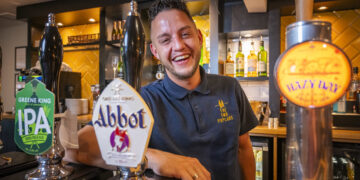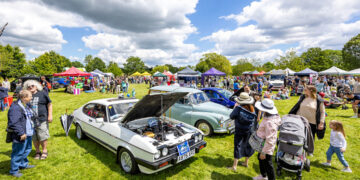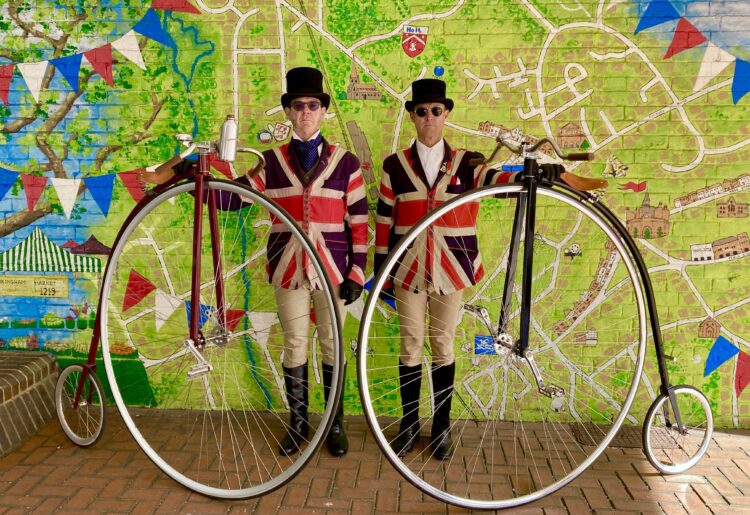DID you see penny farthings in Wokingham recently?
Smiling shoppers enjoyed seeing two Victorian gentlemen out for a spin.
Bill Pollard and Matt Richardson, both from Henley, regularly go for bike rides in the borough, turning heads as they glide along on their penny farthings.
It took them an hour to ride from Henley to Wokingham on Saturday.

“Drivers tend to regard us very differently from the lycra cyclists, who they see as a nuisance,” said Bill.
“They treat us more like a horse, giving us plenty of space and passing slowly, so that even on busy roads we feel quite safe.
“Sometimes, though, they take photos as they drive past, which can be disconcerting.”
Penny farthings were the first viable cycling alternative to the horse.
Invented in 1869, they were popular but expensive, ridden mainly by wealthy gents eager to show off elegant cycling legs.
For this reason they became known as the ‘dandy horse’.
Then safety bikes were invented, with a chain drive that allowed for smaller wheels.
“People could reach the ground easily, and that was the end of the penny farthing,” said Matt.
“Chain drive bicycles were very important to the Suffragette movement, though.
“Cycling was one of the first activities women were allowed to do unchaperoned.
“And they had to wear bloomers to ride, which was extremely radical at the time.”
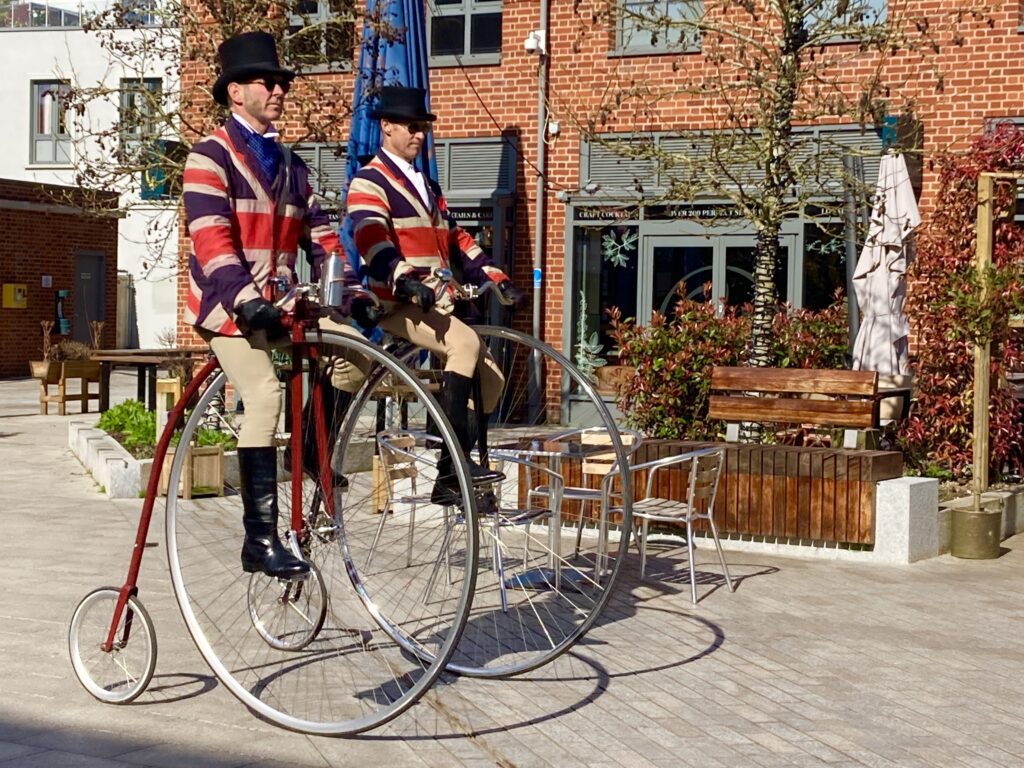
What is it like riding a penny farthing?
Riding is great – getting up and down is the issue,” said Bill.
“They’re actually quite comfortable.
“The saddle has springs, and although the tyres are solid rubber, the big wheel absorbs all the bumps.
“And you’re very high up so you get a fabulous view.”
Is it scary?
“At first, yes, but being high up makes it easier to balance.
“Everyone thinks it must be harder, but it isn’t.
“It’s a bit like the difference between trying to balance a small pencil on your finger tip, or a broomstick.”
Before penny farthings, people rode aptly named ‘bone shakers’.
“Made of metal, they had two small wooden wheels,” explained Matt.
“They were slow and uncomfortable, and each revolution of the wheel took the rider just a short distance.
“Bigger wheels go faster and with much less effort.
“The larger the wheel, the greater the benefits.”

Matt and Bill’s bikes are Swedish, made from very light steel tubing.
“It’s best to get the biggest wheel you can manage,” said Bill.
“Ours are both 54’ diameter, or in horsey language, around 13.5 hands.”
But penny farthings aren’t designed for uphill cycling.
“On the flat they’re great, but uphill it’s like using your slowest possible gear,” he added.
How do you get on them, and then how do you stop?
A step on one side of the bike helps the rider climb up.
“But it definitely takes practice,” said Bill, demonstrating.
“There are no brakes, no gears, no tyres to pump, no chain, and no free wheeling,” he explained.
“The pedals are fixed straight onto the main wheel, so the rider’s feet are their brakes.”
“They’re very simple and there’s little to go wrong with these bikes – getting to Paris we had no problems.
“And with nothing to clean or oil, our outfits don’t get mucked up, either.”

Window shopping in Wokingham, the gentlemen were particularly struck by a couple of tweed suits they spotted in Rose Street.
The pair dress appropriately in matching Union Jack waistcoats and Victorian attire.
“We like to buy three piece suits with breeks to just below the knee, because they look the part,” Matt said.
The friends cycle for fun, but also for charity.
Just over two years ago Matt had cancer.
“The treatment was horrendous, and recovery took time, but I wanted to get back into cycling,” he said.
Very fit before his diagnosis, even after treatment, he could manage a decent cycle.
“But it would exhaust me for a month, and being an idiot, and thinking I was getting better, I did it again and again.
“After three setbacks, my consultant advised me to try something new, with shorter, easier exercise sessions.
Bill continued: “For our fiftieth birthdays we had tried penny farthings, and had a great time.
“We talked about buying one, but we both had families and it never happened.
“Then, when Matt was recovering, we realised the opportunity had arrived.”
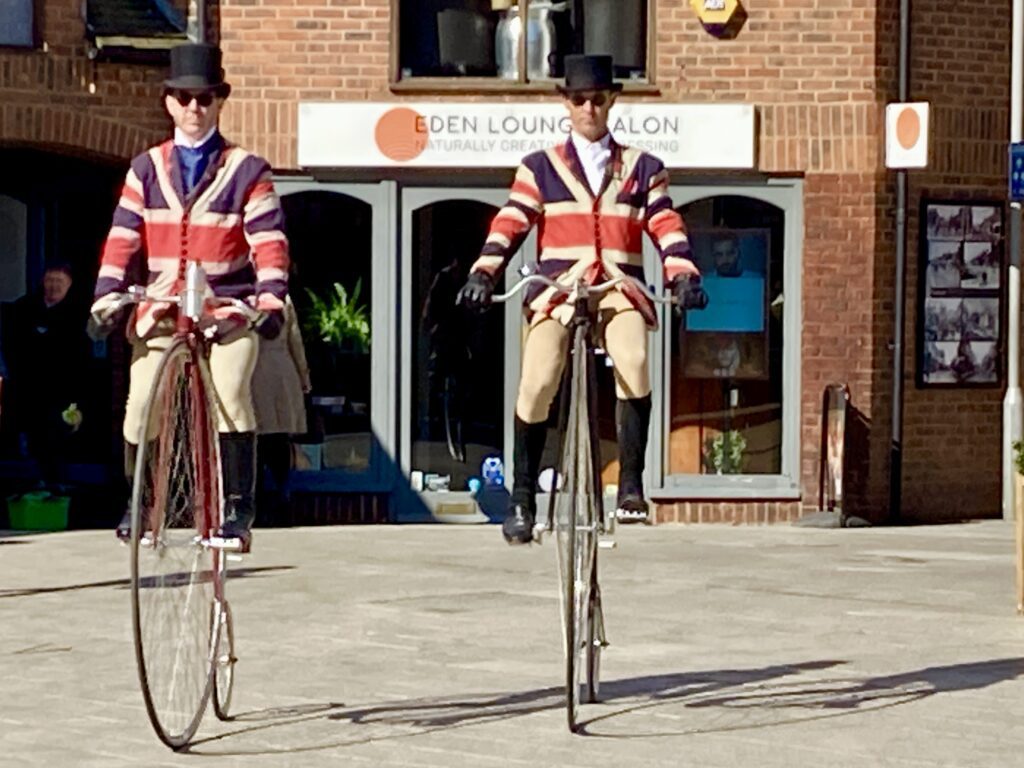
“I got a bike,” said Matt.
“At first it’s absolutely terrifying, and the adrenaline is rushing, but eventually I took it on the road.
“I didn’t die, and I realised it was okay.”
Bill bought a bike too.
“We soon realised the bikes’ power to lift people’s spirits when they see us,” he said.
“We cycled to Paris for Macmillan Cancer last June.
“The charity did a lot to help Matt before, during and after his treatment.
“It was a big comfort to me to know that they had him and his family in their care.
“It’s hard to know how to help someone going through cancer, but they were brilliant.”
The Henley to Paris fundraising page is still open, and having already reached a total of more than £23,000, they still regularly receive donations.
Next year, when the friends both turn 60, they plan to ride from Land’s End to John O’Groats.
“It’s around a thousand miles, and there are plenty of hills, but we’re ready for them,” said Matt.
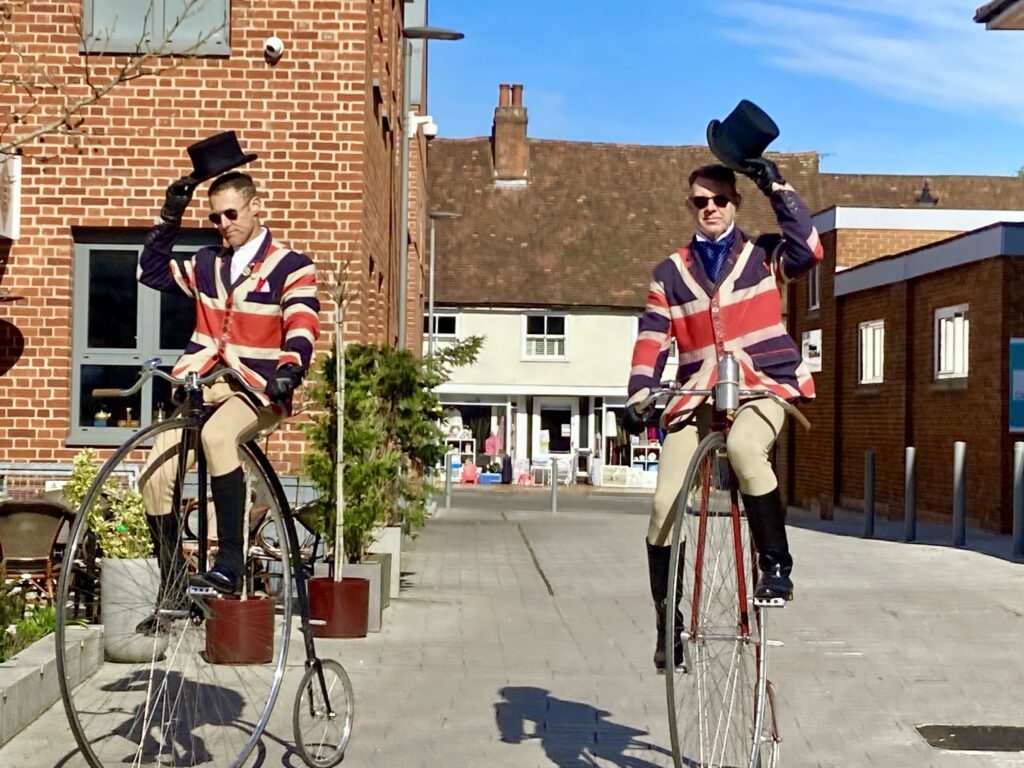
“People ask me if cancer changed my approach to life.
“It did, but I already enjoyed doing these kinds of things, so it’s really just a continuation.
“And I tell myself that if I’m going to cycle from Lands End to John O’Groats, I’d better get on with it.”
Bill and Matt thank all their supporters and funders.
“Do smile and wave – we love it,” they said.
“And please consider supporting Macmillan.”
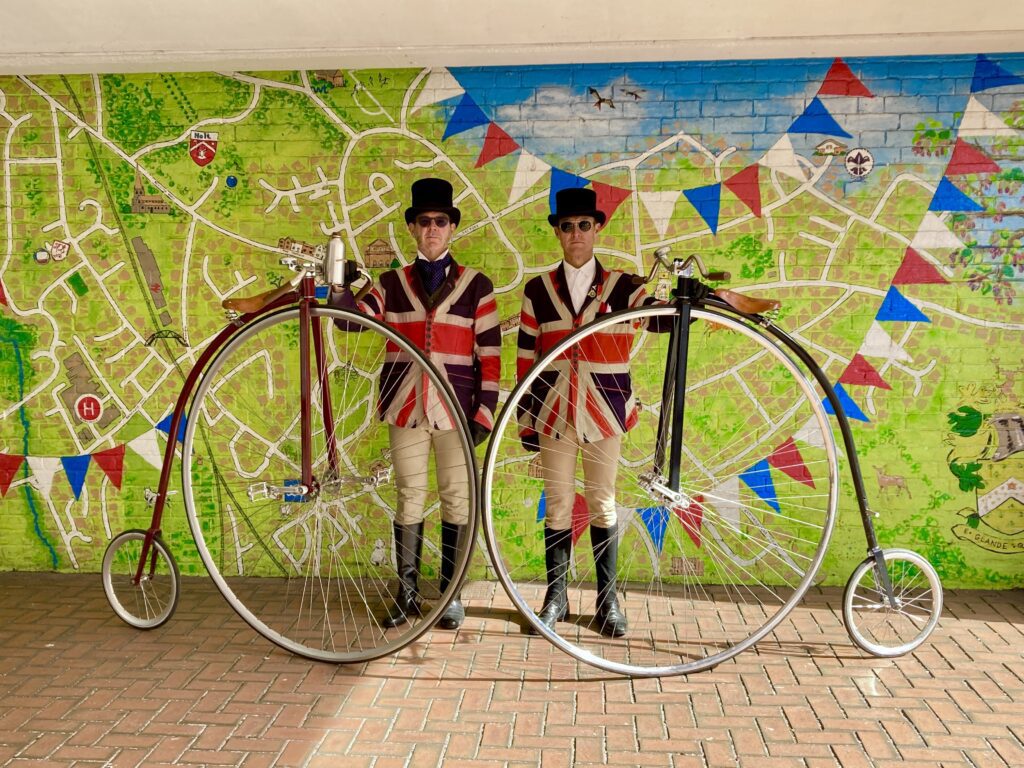
For a donation, they are happy to give people a go at riding a penny farthing – as long as they’re not wearing lycra.
For information, visit: justgiving.com and search for Penny Farthing Henley to Paris, or their find them on social media, at Facebook and Instagram.
For more about Macmillan, log onto: macmillan.org.uk





